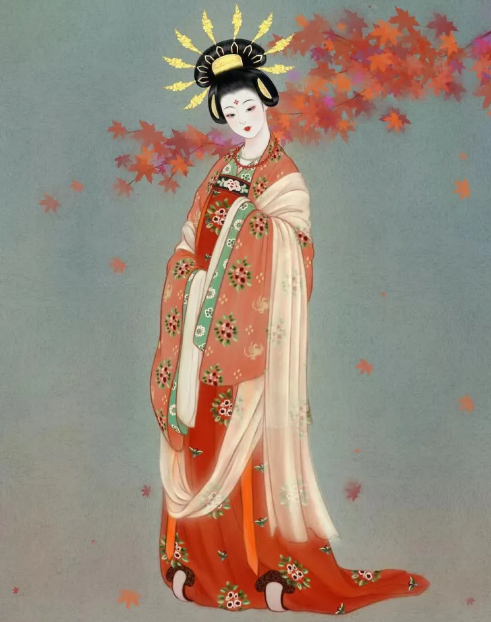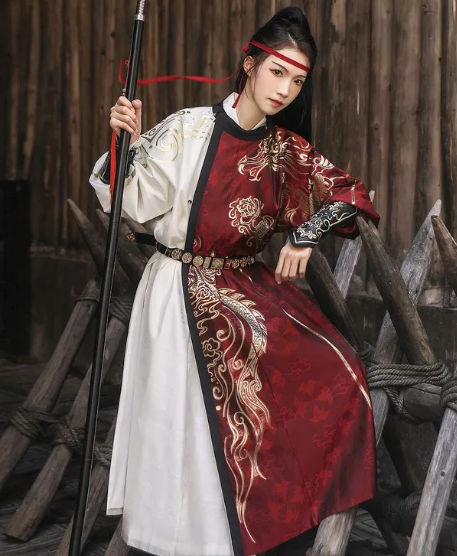The Evolution of Noble Attire in Ancient China
The transformation of noble attire in ancient China traces a rich tapestry of history, mirroring the dynastic changes and cultural evolutions. Clothing not only served as a status symbol but also as a cultural expression.
Early Dynastic Period Styles
During the early dynastic periods, such as the Shang and Zhou dynasties, nobles prominently wore robes that signified their status. These garments, often made from silk, featured intricate patterns and symbols. For instance, the Shang Dynasty is renowned for introducing silk robes, which were often decorated with jade, indicating wealth and power. The Zhou dynasty further refined these styles, emphasizing ceremonial robes in their hierarchical society.

Influences from Silk Road and Foreign Cultures
The Silk Road played a pivotal role in the evolution of noble attire. This ancient trade route facilitated the exchange of not only goods but also ideas and cultural practices. Through the Silk Road, elements from Persian, Indian, and even Hellenistic cultures seeped into Chinese noble fashion. For example, the Han Dynasty saw the incorporation of foreign motifs into their silk weaving, resulting in a fusion of styles that enriched the complexity of their garments. This period marked a shift towards more elaborate designs, with flowing robes and intricate embroideries becoming the norm among the nobility.
Materials and Fabrics Used in Noble Garments
Ancient Chinese nobility showcased their status through the luxurious materials and fabrics of their clothing. The choice of fabric not only reflected wealth but also cultural and social significance.
Silk: The Fabric of Emperors
Silk, known for its luxurious sheen and soft texture, held a place of unrivaled prestige in noble attire. Originating from the sericulture of silkworms, a process intricately linked to Chinese culture, silk represented wealth and status. The Silk production process was a closely guarded secret, making it a valuable commodity. Emperors and high-ranking officials often adorned themselves in silk garments, with colors and patterns that signified their rank and position.
Other Materials: Hemp, Linen, and Animal Skins
Apart from silk, other materials like hemp, linen, and animal skins were also prevalent in noble clothing. Hemp, a more affordable yet durable material, was widely used in everyday garments of the nobility. Linen, derived from the flax plant, offered a lighter alternative and was popular during warmer seasons. Animal skins and furs, sourced from both domestic and exotic animals, added an element of luxury and were often used in winter clothing. These materials not only provided diversity in texture and appearance but also indicated the adaptability of Chinese nobility to different climates and occasions.
Color Symbolism in Ancient Chinese Noble Attire
In ancient China, colors in noble attire were not just aesthetic choices but held deep symbolic meanings, reflecting social status, philosophical ideas, and cultural values.
The Significance of Yellow and Red
Yellow, revered as the most prestigious color, symbolized power and was traditionally reserved for the emperor. This exclusivity of yellow in royal clothing represents its connection to the Earth in Chinese cosmology. Red, equally significant, symbolized good fortune and joy. It was commonly used in garments for festive occasions and ceremonies. Emperors often wore red during important events to symbolize their role as the mediator between Heaven and Earth.
The Meaning of Blue and Black in Royal Clothing
Blue and black, while less opulent than yellow or red, held their own importance in royal attire. Blue, associated with the Wood element in Chinese philosophy, was often worn to symbolize stability and fidelity. Black, linked to the Water element, represented depth and introspection. These colors were typically used in garments for specific ceremonies or seasons, showcasing the sophisticated understanding of color symbolism in ancient Chinese culture.
Accessories and Ornaments for Nobles
Ancient Chinese nobles adorned themselves with a variety of accessories and ornaments, each signifying status, wealth, and cultural values.
Headwear and Hair Ornaments
Headwear in noble attire was not just a fashion statement but a symbol of status. Crown-like headpieces, often made of gold or jade, signified royal or noble lineage. Hair ornaments such as intricate hairpins and combs, often adorned with pearls and precious stones, were popular among noblewomen, indicating their status and elegance. These pieces were not only decorative but also held cultural significance, often reflecting the wearer’s social position and marital status.
Jewelry and Other Decorative Items
Jewelry in ancient China went beyond mere adornment. It included necklaces, bracelets, and rings, typically made from jade, gold, and silver. These materials were chosen for their beauty and cultural significance, with jade particularly revered for its purity and connection to immortality. Other decorative items like brooches and belts, often embellished with intricate designs and symbols, played a crucial role in completing the regal appearance of Chinese nobility. These items, while serving as symbols of wealth, also reflected the artistic and cultural achievements of the era.
Traditional Dressing Rituals and Etiquette
In ancient China, dressing was not merely a daily routine but a ritual filled with cultural significance and strict etiquette, reflecting one’s social status and respect for tradition.
Layering and Seasonal Variations
Noble attire often involved multiple layers, each serving a specific purpose and reflecting the season. During colder months, nobles wore several layers of clothing, typically made of silk or other fine fabrics, for warmth. In contrast, the summer wardrobe featured lighter, more breathable materials. This layering was not just practical but also a display of wealth and status, with the innermost layers often being the most luxurious and elaborately decorated.
Ceremonial Dressing and Formal Occasions
For ceremonial occasions and formal events, the dressing process was elaborate and governed by strict rules. Each garment, accessory, and color choice was carefully selected to suit the occasion’s significance. For instance, weddings, court ceremonies, and official functions required specific attire that adhered to ancient protocols. This ceremonial dressing process was a meticulous ritual, often assisted by several servants, underscoring the importance of appearance and propriety in noble society.

Influence of Ancient Noble Attire on Modern Fashion
The rich legacy of ancient Chinese noble attire continues to influence and inspire modern fashion, seamlessly blending historical elegance with contemporary style.
Revival in Contemporary Clothing Designs
Today’s fashion designers frequently incorporate elements of ancient noble attire into their collections. They draw inspiration from the intricate embroidery, luxurious silks, and vibrant colors that once graced the courts of Chinese emperors. This fusion of ancient motifs with modern styles has led to unique, culturally rich fashion statements. Designers skillfully adapt traditional patterns and cuts, making them relevant and appealing to the modern audience.
Cultural Heritage and Fashion Exhibitions
Fashion exhibitions around the world often showcase the profound impact of ancient Chinese noble attire. These exhibitions present an array of traditional garments, offering a glimpse into the rich cultural heritage and sartorial elegance of ancient China. They not only celebrate the intricate craftsmanship and artistic skills of the past but also highlight how these historical elements are being reinterpreted in contemporary fashion. Through these exhibitions, the legacy of ancient noble attire continues to captivate and inspire fashion enthusiasts globally.







